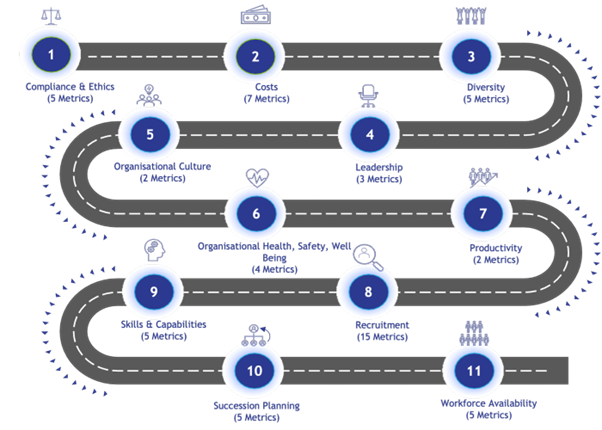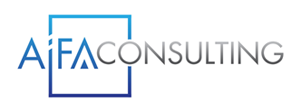
People Analytics: A Universal Language that Requires a Global Standard
- February 2025 Edition
- 5 mins
People Analytics (PA) has transformed how organisations understand and optimise their workforce. It is increasingly becoming a universal language, enabling businesses across industries and regions to communicate workforce insights in a structured, data-driven manner. However, a critical challenge remains: inconsistency in data collection, reporting, and interpretation.
A 2025 survey by SoftServe found that 58% of business leaders acknowledge their companies make key decisions based on inaccurate or inconsistent data. Additionally, 65% believe that no one in their organisation fully understands all the data collected or how to access it. Without a shared foundation, organisations struggle to derive reliable insights, benchmark effectively, and drive meaningful decisions.
Without a common framework, comparing workforce metrics across companies, industries, and geographies becomes difficult. This is where ISO 30414, the first international standard for human capital reporting, plays a critical role in ensuring that organisations speak the same language when it comes to workforce data.
The Hidden Cost of Inconsistent People Data
Key Challenges Without Standardisation:
- Organisations define and measure HR indicators differently, leading to disparities in reporting. For example, one company might measure employee engagement based on survey participation rates, while another uses sentiment analysis from internal communications. Without a standardised approach, these variations make cross-company comparisons unreliable.
- Without a common framework, it becomes difficult to compare workforce performance and trends across companies. For instance, turnover rates in one organisation may include voluntary and involuntary exits, while another only considers resignations. This inconsistency skews industry-wide benchmarking efforts and misinforms decision-making.
- Varying methodologies create inconsistencies, making it challenging to trust and act on insights. A company that collects absence data from payroll records may report vastly different results compared to another relying on self-reported leave data. These discrepancies undermine confidence in analytics and decision-making.
- As regulatory requirements evolve, companies without standardised reporting may struggle to keep up. The Securities and Exchange Commission (SEC) in the U.S. has introduced human capital disclosure requirements, pushing organisations to report on workforce-related metrics transparently. Similarly, the Corporate Sustainability Reporting Directive (CSRD) in the EU mandates organisations to incorporate human capital metrics into their broader sustainability disclosures. At a global level, the International Organisation of Securities Commissions (IOSCO) is working to align corporate reporting frameworks, ensuring consistency and comparability across financial markets. Organisations that fail to integrate these evolving regulations into their PA frameworks risk falling behind in compliance and investor expectations
From Data Overload to Strategic Insights: How Standards Improve People Analytics
1. Establishing a Shared Workforce Data Framework

2. Comparing Apples to Apples: The Power of Benchmarking
3. Building Credibility with Transparent People Data
4. Supporting Advanced People Analytics
5. Structuring Human Capital Reporting for Meaningful Insights
ISO 30414 provides a strong foundation for identifying key workforce metrics suitable for public disclosure. HR teams should take a structured approach by:
- Reviewing the metrics outlined in ISO 30414 and comparing them to those already reported internally.
- Sourcing additional relevant data while ensuring the necessary tools and processes are in place to collect information reliably.
- Determining the metrics that best meet stakeholder expectations while maintaining transparency and strategic relevance.
Why This Matters Now: The Growing Demand for Standardised Workforce Data
Integrating Standards into People Analytics
Organisations looking to strengthen their People Analytics function through standardisation should consider the following:
- Adopt ISO 30414 by aligning existing human capital reporting with this international standard to enhance data consistency.
- Establish clear data governance policies to ensure uniform measurement of workforce metrics.
- Invest in capability building by training HR and analytics teams on applying standardised reporting frameworks.
- Engage with industry peers in professional networks and standardisation discussions to shape best practices.
For more insights on organisations that have successfully implemented ISO 30414 and earned certification, visit HCM Impact.
Strengthening People Analytics Through Standardisation
People Analytics has the power to transform workforce decisions, but its full potential can only be realised when built on a foundation of consistent, globally recognised standards. Organisations that implement ISO 30414, will improve their analytics capabilities, benchmarking, and create a more transparent, data-driven future for workforce management. WEF and industry experts increasingly advocate for structured human capital reporting as a way to measure organisational value beyond traditional financial statements. As this movement gains traction, business leaders must ensure their organisations are not left behind. The conversation around standardisation is gaining momentum and now is the time to ensure that People Analytics evolves with the structure and credibility it needs to drive real impact.
Ready to test your knowledge of the ISO 30414 Reportable Areas? Try it now or click the image to start the interactive Word Search! 😊
Further Reading
ISO 30414:2018 – Guidelines for Internal and External Human Capital Reporting
- Source – International Organization for Standardization (ISO)
- Publication Date – December 1, 2018
- Link – https://www.iso.org/standard/69338.html
- Details – This standard provides guidelines for human capital reporting, covering 11 key areas: compliance and ethics, costs, diversity, leadership, organsational culture, organizational health, safety and well-being, productivity, recruitment, mobility and turnover, skills and capabilities, succession planning, and workforce availability.
Lifting the Lid on the Value of a Company's Human Capital
- Authors – Hilger Pothmann and Mark Loon
- Source – World Economic Forum
- Publication Date – December 12, 2019
- Link: https://www.weforum.org/stories/2019/12/now-there-s-a-way-to-measure-the-value-of-your-company-s-human-capital/
- Details – This article discusses the development of ISO 30414, highlighting its role in defining key human capital areas such as diversity, compensation, training, and leadership, thereby creating a framework for benchmarking human capital intangibles.
Human Capital Analytics and Reporting: Exploring Theory and Evidence
- Author – Edward Houghton
- Source – Chartered Institute of Personnel and Development (CIPD)
- Publication Date – May 2017
- Link – https://www.cipd.org/globalassets/media/knowledge/knowledge-hub/reports/human-capital-analytics-and-reporting_tcm18-22281.pdf
- Details – This research report delves into the theories and evidence surrounding human capital analytics and reporting, providing insights into effective practices and methodologies.
People Analytics: Guide for People Professionals
- Source – Chartered Institute of Personnel and Development (CIPD)
- Link – https://www.cipd.org/en/knowledge/guides/analytics-practitioner-guide/
- Details – This guide aims to help HR professionals understand the basics of people analytics, enhancing their confidence and capability in using data to inform decision-making.
Human Capital Measurement and Reporting: The New Frontier in Talent Strategy and ESG
- Authors – Sean R. Gallagher, Curtis Odom, Emilee Trieckel, Monica Borgida
- Source – Northeastern University
- Publication Date – January 2023
- Link – https://cps.northeastern.edu/wp-content/uploads/2023/01/Human-Capital-Measurement-and-Reporting.pdf
- Details – This document emphasizes the growing importance of human capital measurement and reporting, highlighting the need for standardized practices to provide investors with comprehensive information for accurate valuation of human capital.
Corporate Sustainability Reporting
- Source – European Commission
- Link https://finance.ec.europa.eu/capital-markets-union-and-financial-markets/company-reporting-and-auditing/company-reporting/corporate-sustainability-reporting_en
- Details – This page outlines the European Union’s requirements for large and listed companies to publish regular reports on social and environmental risks, as well as the impact of their activities on people and the environment.
IOSCO Encourages Standard-Setters’ Work on Assurance of Sustainability-Related Corporate Reporting
- Source- International Organization of Securities Commissions (IOSCO)
- Publication Date- September 15, 2022
- Link:https://www.iosco.org/library/pubdocs/pdf/IOSCOPD713.pdf
- Details: This statement from IOSCO welcomes the efforts of international standard-setters to develop assurance and ethics standards for sustainability-related corporate reporting, aiming to enhance the reliability and comparability of such information.
Human Capital Impact - ISO 30414 Certified Organizations
- Source- Human Capital Impact
- Link- https://hcm-impact.com/iso-30414-certified
- Details- This page lists organizations that have achieved ISO 30414 certification, indicating a growing trend of companies adopting standardized human capital reporting to enhance investor dialogue, ESG compliance and disclosure.

